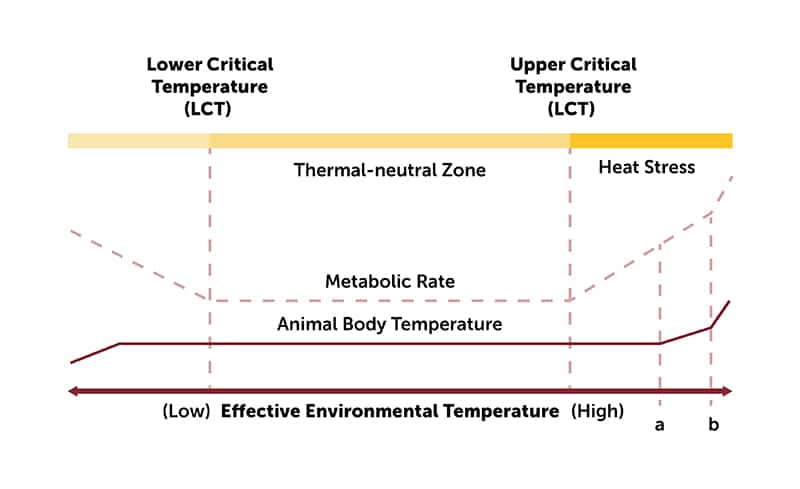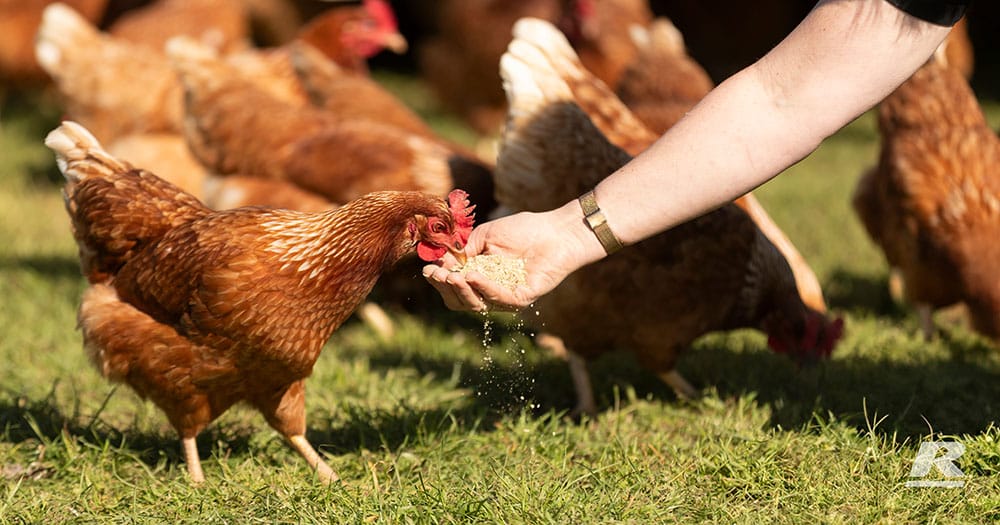Laying hens and cold weather: strategies required for health and productivity
As winter approaches in Australia, it’s crucial to adapt our management strategies for laying hens to ensure they stay healthy and productive. Different housing systems (caged, barn, free-range or caravan) present a different set of challenges, and require different approaches during the colder months. Reid Stockfeeds’ Consultant Poultry Nutritionist Judy O’Keeffe gives us advice on how best to manage your flock through winter’s chill.
Caged and barn facilities
When airflow in houses is reduced during the colder months to keep the hens warm, it is vital to maintain good air quality. Poor ventilation can result in unacceptable levels of dust and noxious gases (ammonia, carbon dioxide and carbon monoxide), to the detriment of flock health. Increased manure moisture due to insufficient air drying can make manure more difficult to handle. Cold hens may over consume feed resulting in excessive intake of protein further exacerbating ammonia production and likely further increasing water excretion, hence manure moisture.
Strategies to mitigate these issues
- Closely monitor house temperature and ammonia levels to strike the best possible balance. Note the RSPCA standard: “ammonia must not exceed 15ppm at bird head height”.
- In barns, do your best to keep manure dry and friable to avoid cold caked manure – a cold floor means cold hens.
- Adjust feeding programs: If phase-feeding, advance to the next phase a little sooner in winter than you do in summer. And/or make seasonal adjustments to the diets to avoid excessive winter protein intake.
- Use feed additives: Certain additives can reduce air ammonia concentration and/or manure moisture.
- Improve nutrient digestibility: Add feed enzymes to feed to improve nutrient digestibility and uptake to minimise fermentation of wasted nutrients in manure.
Free-range and caravan facilities
Free-range hens face the risk of chilling outside or near walls and pop holes. If cold stress is severe, hens will fluff up their feathers, huddle together, and might even spend insufficient time feeding resulting in a loss of body weight and productivity. Where circumstances are less severe, feed intake is likely to increase above normality yet productivity will still likely suffer.
Tips to keep free-range hens warm
- Find and eliminate drafts in houses where possible: but ensure adequate ventilation to reduce risk of piling and for good air quality.
- Consider your indoor space: do your hens have enough space to fluff up a little yet be close enough together to share body heat? Note: make sure to comply with stocking density standards.
- Keep hens dry and protect them from wind chill: to help them retain insulating air under their feathers.
- Invest in shelter belts: Bushy shrubs and trees to the west and south best provide shelter from prevailing winter winds in South East Australia. Consider providing breeze barriers on the windward side of houses, close enough to pop holes to reduce drafts.
- Rethink tall trees on the north side of ranging area: Tall trees on the north boundary cast long, cold winter shadows and might not provide effective shade in the summer.
- Observe hen behaviour: Note the preferred and avoided areas to adjust the environment accordingly.
- Adjust diet: the required winter diet might have a lower amino acid to energy ratio with a higher heat increment.
Cold stress increases feed cost per dozen eggs
Cold stress occurs when hens experience temperatures below their Lower Critical Temperature (LCT), approximately 18°C for commercial laying hens. Below the LCT, hens need more energy to stay warm and to maintain their bodily functions. Commonly, cold hens achieve this by diverting energy away from productivity reducing egg mass output. They will most likely increase their energy intake by eating more feed.
Impact of cold stress:
- Energy diversion: Hens may produce fewer and/or smaller eggs.
- Increased feed consumption: For every 1°C below the LCT, hens need an additional 4Kcal/day, often met by consuming more feed (approximately 1.5g per day if a 2800 Kcal/Kg AME diet).

In conclusion, taking steps to reduce the impact and implications of cold stress will improve your bottom line and the welfare of your hens. Managing laying hens during winter requires careful attention to their environment and adjustment to their diet. By applying the strategies outlined above, you can help your hens stay healthy and maintain productivity productive through the colder months.
For more tailored advice and high-quality feed solutions to keep your hens healthy and productive during winter, consult the experts at Reid Stockfeeds. Our team is dedicated to helping you optimise your feeding program and manage the unique challenges of cold weather. Contact us today to explore our range of specialised chicken feed products designed to support your flock’s wellbeing throughout the season. Call 1300 REID FEED or enquire here >
Author
Judy O’Keeffe
Consultant Poultry Nutritionist
